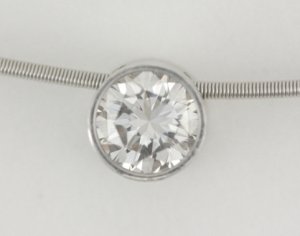I need some advice in understanding older European grading. I am considering the following diamond, which is graded and certified by Hoge Raad voor Diamant (HRD) in Antwerp Belgium in 1992. The grades are as follows:
1.16ct round brilliant
clarity: loupe clean
color: rare white (G)
measurements: 6.70-6.80mm x 4.14mm
proportions: very good
girdle: medium 3.5%
culet: pointed
table width: 63%
height 12.5%
depth 45%
finish grade: good
graining is present
What would be the modern day exquivalents for clarity, color and cut? And what does it mean "graining ir present", if the clarity is "loupe clean"?
Any comments on other concerns about buying it, or even a general idea on how much this diamond may be worth, would also be helpfull. Thank you!
Min
1.16ct round brilliant
clarity: loupe clean
color: rare white (G)
measurements: 6.70-6.80mm x 4.14mm
proportions: very good
girdle: medium 3.5%
culet: pointed
table width: 63%
height 12.5%
depth 45%
finish grade: good
graining is present
What would be the modern day exquivalents for clarity, color and cut? And what does it mean "graining ir present", if the clarity is "loupe clean"?
Any comments on other concerns about buying it, or even a general idea on how much this diamond may be worth, would also be helpfull. Thank you!
Min
















300x240.png)